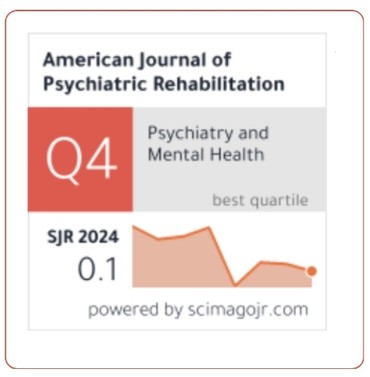Design And Development Of Clarithromycin-Loaded Microspheres For The Treatment Of H Pylori Infection
DOI:
https://doi.org/10.69980/ajpr.v28i5.352Keywords:
Gastro-retentive drug delivery system, Clarithromycin, Microspheres, Spray drying, Sustained releaseAbstract
A promising strategy for improving the bioavailability and therapeutic effectiveness of drugs with absorption windows in the upper gastrointestinal tract is the use of gastro-retentive drug delivery systems (GRDDS). A macrolide antibiotic clarithromycin is frequently used to treat Helicobacter pylori-induced peptic ulcers and upper respiratory tract infections. However, the creation of a controlled-release formulation is required due to its short biological half-life and variable bioavailability. The aim of this study was to design and optimize a gastro-retentive formulation of clarithromycin-loaded microspheres using a spray drying technique. he formulation that was optimized demonstrated prolonged drug release characteristics, appropriate physicochemical features, and good entrapment efficiency. Better bioavailability and patient compliance were indicated by the in vitro drug release profile, which showed a regulated release of clarithromycin over a 6-hour period. A promising method for boosting clarithromycin's therapeutic efficacy is the new gastro-retentive microsphere formulation, which could be a useful treatment alternative for individuals suffering from respiratory tract infections.
References
1. Ali A, AlHussaini KI. Helicobacter pylori: a contemporary perspective on pathogenesis, diagnosis and treatment strategies. Microorganisms. 2024;12(1):222.
2. Inoue M. Epidemiology of Gastric Cancer—Changing Trends and Global Disparities. Cancers. 2024;16(17):2948.
3. Bashir SK, Khan MB. Overview of Helicobacter pylori infection, prevalence, risk factors, and its prevention. Advanced Gut & Microbiome Research. 2023;2023(1):9747027.
4. Chitas R, Fonseca DR, Parreira P, Martins MCL. Targeted nanotherapeutics for the treatment of Helicobacter pylori infection. Journal of Biomedical Science. 2024;31(1):78.
5. Hu Y, Zhu Y, Lu N-H. Recent progress in Helicobacter pylori treatment. Chinese Medical Journal. 2020;133(03):335-43.
6. Lin Y, Shao Y, Yan J, Ye G. Antibiotic resistance in Helicobacter pylori: From potential biomolecular mechanisms to clinical practice. Journal of Clinical Laboratory Analysis. 2023;37(7): e24885.
7. Argueta EA, Ho JJ, Elfanagely Y, D’Agata E, Moss SF. Clinical implication of drug resistance for H. pylori management. Antibiotics. 2022;11(12) :1684.
8. Truong-Le V, Lovalenti PM, Abdul-Fattah AM. Stabilization challenges and formulation strategies associated with oral biologic drug delivery systems. Adv Drug Deliv Rev. 2015;93:95-108.
9. Chavanpatil M, Jain P, Chaudhari S, Shear R, Vavia P. Development of sustained release gastroretentive drug delivery system for ofloxacin: in vitro and in vivo evaluation. Int J Pharm. 2005;304(1-2):178-84.
10. Sharma A, Khan A, editors. GASTRORETENTIVE DRUG DELIVERY SYSTEM: AN APPROACH TO ENHANCE GASTRIC RETENTION FOR PROLONGED DRUG RELEASE2014.
11. Desai N, Pande S, Vora LK, Kommineni N. Nanofibrous microspheres: a biomimetic platform for bone tissue regeneration. ACS Applied Bio Materials. 2024;7(7):4270-92.
12. Saxena A, Gaur K, Singh V, Singh RK, Dashora A. Floating microspheres as drug delivery system. American Journal of Pharmacy and Pharmaceutical Sciences. 2014;1(2):27-36.
13. Ali J, Arora S, Ahuja A, Babbar AK, Sharma RK, Khar RK, et al. Formulation and development of hydrodynamically balanced system for metformin: in vitro and in vivo evaluation. European journal of pharmaceutics and biopharmaceutics. 2007;67(1):196- 201.
14. Kumar P, Khairya D, Teotia D, Rajpoot V. FLOATING DRUG DELIVERY SYSTEM: AN UPDATED REVIEW. International Journal of Current Innovations in Advanced Research. 2022:8-16.
15. Li X, Li L, Wang D, Zhang J, Yi K, Su Y, et al. Fabrication of polymeric microspheres for biomedical applications. Materials Horizons. 2024.
16. Joshi P, Patel P, Modi H, Patel M, Patel K, Patel N. A review on gastroretentive drug delivery system. Journal of Pharmaceutical Science and Bioscientific Research. 2012;2(3):123-8.
17. Sanghavi RS, Agrawal O, Usman MRM. Gastroretentive drug delivery system: An overview. Research Journal of Pharmacy and Technology. 2022;15(3):1343-7.
18. Tripathi J, Thapa P, Maharjan R, Jeong SH. Current State and Future Perspectives on Gastroretentive Drug Delivery Systems. Pharmaceutics. 2019;11(4).
19. Schwartz JB, Sharp M. Optimization techniques in product formulation. 1981.
20. Singh B, Kumar R, Ahuja N. Optimizing drug delivery systems using systematic" design of experiments." Part I: fundamental aspects. Critical Reviews™ in Therapeutic Drug Carrier Systems. 2005;22(1).
21. Liang Y-K, Cheng W-T, Chen L-C, Sheu M-T, Lin H-L. Development of a Swellable and Floating Gastroretentive Drug Delivery System (sf GRDDS) of Ciprofloxacin Hydrochloride. Pharmaceutics. 2023;15(5):1428.
22. Singh M, Das MK. A Comprehensive Review on Role of Natural Polymers in Gastro Retentive Drug Delivery System (GRDDS). Drug Delivery Letters. 2024.
23. Lin H-L, Chen L-C, Cheng W-T, Cheng W-J, Ho H-O, Sheu M-T. Preparation and characterization of a novel swellable and floating gastroretentive drug delivery system (sf GRDDS) for enhanced oral bioavailability of nilotinib. Pharmaceutics. 2020;12(2):137.
24. Karemore MN, Avari JGJAP. Formulation, optimization, and in vivo evaluation of gastroretentive drug delivery system of nifedipine for the treatment of preeclampsia. 2019;20(5):1-16.
25. Sosnik A, Seremeta KP. Advantages and challenges of the spray-drying technology for the production of pure drug particles and drug-loaded polymeric carriers. Advances in colloid and interface science. 2015;223:40-54.
Downloads
Published
Issue
Section
License
Copyright (c) 2025 American Journal of Psychiatric Rehabilitation

This work is licensed under a Creative Commons Attribution 4.0 International License.
This is an Open Access article distributed under the terms of the Creative Commons Attribution 4.0 International License permitting all use, distribution, and reproduction in any medium, provided the work is properly cited.









